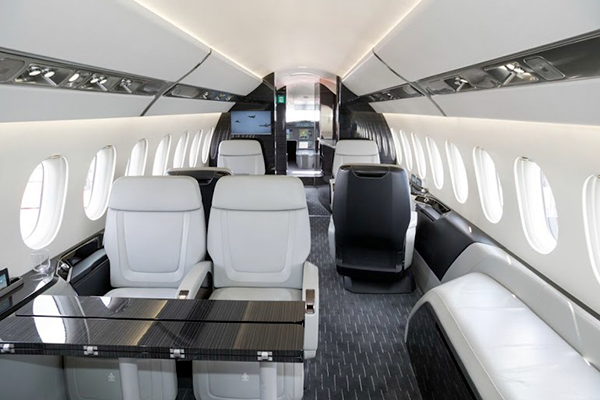At OmnAvia Interiors, we pride ourselves on offering our wide variety of carpeting options to meet all our customers’ varied tastes and specifications. From style to functionality, we aim to provide the ideal selection of materials for any aircraft. Below is a comparison of the safety, cost, and aesthetic components between wool and nylon carpet pile fibers to aid you in making the best choice for your aircraft.
Wool
Features & Benefits
Known for its durability and elegance, wool is an excellent choice for any aviator wishing to enhance the aesthetics of their plane while sticking to natural fibers. Wool is a step above the rest in its general appearance, providing a luxurious element to your furnishings while maintaining the benefit of flame retardance. Wool is always a sensible choice, and OmnAvia’s wool pile carpets are available in a multitude of patterns and a plethora of colors to meet the preference of any individual. In our industry where safety is paramount, wool pile carpets generally are the only carpets that meet the flammability and aesthetic requirements for larger private and Part 135 aircraft, and IMO requirements for the cruise ship industry.

Sourced from New Zealand sheep, our wool is a renewable resource and is the first choice for those clients who prefer a higher-end, eco-friendly option. Because it is a natural fiber, wool also aids in filtering airborne pathogens by trapping them in the top layer of fibers. Wool is easy to clean and maintain and provides a non-toxic option for those concerned with chemical exposure that may come from plastics. Although it is an elegant option, wool carpet is not delicate; it stands up to general wear and tear quite efficiently over time with proper maintenance and routine cleaning.
Cons to Consider
Wool is a luxurious fiber because it is processed utilizing centuries-old skilled craftsmanship. The process of converting raw wool fiber into dyed yarn is more costly and time-consuming than standard synthetic fibers, increasing the price tag on wool carpet items. Additionally, because it is a natural fiber, wool requires a bit more upkeep than a standard nylon carpet. Wool yarn is a spun yarn, with individual wool fibers twisted into strands. Shorter fibers will eventually release from the yarn bundle and become loose on the carpet surface. It is important to regularly vacuum wool carpets to prevent any build-up of these loose fibers in the air vents and to remove these short fibers from the pile to prevent those “dust bunnies” from overtaking the cabin. Over time the amount of shedding will diminish. If you are searching for the next level of elegance for your airplane or yacht, this extra bit of routine maintenance will keep your wool carpeting in top shape for years to come.
Nylon
Features & Benefits
Nylon carpeting is perhaps the most common of carpet pile fibers selected for airplanes and cruise liners. Although nylon fiber is not inherently flame-resistant, it can be constructed to be so, but only in large production volumes. In the commercial aviation market, nylon is the ideal choice for vessels operating within a specific budget. It simply requires specific components in a woven (not tufted) construction and a specialized back coating for stability and flame retardancy. But because it is a synthetic product and easier to produce, nylon is a more affordable option while still offering an infinite variety of patterns and colors.
Woven nylon carpet is an exceptional option that meets all the following standards:
- Low pile height
- Lightweight
- High crush resistance
- Flame retardancy
- Stain repellency
- Excellent cleanability
- Visual attraction
- Affordability
- Minimal shedding
Tufted nylon carpets for Part 91 aircraft offer the following advantages to the owner:
- Lower cost
- High crush-resistance
- Stain resistance
- Variety of patterns and colors
- Visual attraction
- Excellent cleanability
Cons to Consider
Nylon is a synthetic material, which greatly contributes to its affordability and easy to clean nature. However, this also increases the risk of chemical exposure as it is a petroleum-based product and there are some gases that can slough off nylon carpets and its adhesives that hold it all together, affecting those individuals with highly sensitive immune systems. Wool is the better option for those wishing to eliminate chemical exposure to hazardous airborne products (HAPs).
In total, though they are similar, wool’s natural flame retardance provides greater safety ratings, adhering to FAA and IMO standards with minimal after-treatment (only to the carpet backing) required.
While the durability of wool and nylon is comparable, nylon has certain advantages over wool that make it a standard material found on most commercial and Part 91 aircraft. Whether you choose the timeless elegance of wool or the tried-and-true practicality of nylon, OmnAvia’s hands-on customer service and dedication to quality and client satisfaction are sure to recommend to you the ideal material to suit your needs .
